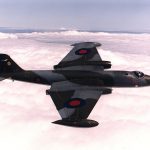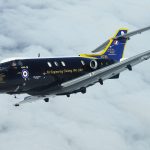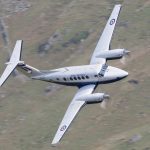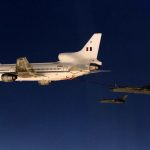Aircraft-based augmentation system (ABAS). An augmentation system that augments and/or integrates the information obtained from the other GNSS elements with information available on board the aircraft.
Note. — The most common form of ABAS is receiver autonomous integrity monitoring (RAIM).
Airspace concept. An airspace concept provides the outline and intended framework of operations within an airspace. Airspace concepts are developed to satisfy explicit strategic objectives such as improved safety, increased air traffic capacity and mitigation of environmental impact etc. Airspace Concepts can include details of the practical organization of the airspace and its users based on particular CNS/ATM assumptions, e.g. ATS route structure, separation minima, route spacing and obstacle clearance.
Approach procedure with vertical guidance (APV). An instrument procedure which utilizes lateral and vertical guidance but does not meet the requirements established for precision approach and landing operations.
Area navigation (RNAV). A method of navigation which permits aircraft operation on any desired flight path within the coverage of station-referenced navigation aids or within the limits of the capability of self-contained aids, or a combination of these.
Note.— Area navigation includes performance-based navigation as well as other RNAV operations that do not meet the definition of performance-based navigation.
Area navigation route. An ATS route established for the use of aircraft capable of employing area navigation.
ATS surveillance service. A term used to indicate a service provided directly by means of an ATS surveillance system.
ATS surveillance system. A generic term meaning variously, ADS-B, PSR, SSR or any comparable ground-based system that enables the identification of aircraft.
Note.— A comparable ground-based system is one that has been demonstrated, by comparative assessment or other methodology, to have a level of safety and performance equal to or better than monopulse SSR.
Cyclic redundancy check (CRC). A mathematical algorithm applied to the digital expression of data that provides a level of assurance against loss or alteration of data.
Mixed navigation environment. An environment where different navigation specifications may be applied within the same airspace (e.g. RNP 10 routes and RNP 4 routes in the same airspace) or where operations using conventional navigation are allowed in the same airspace with RNAV or RNP applications.
Navigation aid (navaid) infrastructure. Navaid infrastructure refers to space-based and or ground-based navigation aids available to meet the requirements in the navigation specification.
Navigation application. The application of a navigation specification and the supporting navaid infrastructure, to routes, procedures, and/or defined airspace volume, in accordance with the intended airspace concept.
Note.— The navigation application is one element, along with communication, surveillance and ATM procedures which meet the strategic objectives in a defined airspace concept.
Navigation function. The detailed capability of the navigation system (such as the execution of leg transitions, parallel offset capabilities, holding patterns, navigation databases) required to meet the airspace concept.
Note.— Navigational functional requirements are one of the drivers for the selection of a particular navigation specification. Navigation functionalities (functional requirements) for each navigation specification can be found in Volume II, Parts B and C.
Navigation specification. A set of aircraft and aircrew requirements needed to support performance-based navigation operations within a defined airspace. There are two kinds of navigation specification:
- RNAV specification. A navigation specification based on area navigation that does not include the requirement for performance monitoring and alerting, designated by the prefix RNAV, e.g. RNAV 5, RNAV 1.
- RNP specification. A navigation specification based on area navigation that includes the requirement for performance monitoring and alerting, designated by the prefix RNP, e.g. RNP 4, RNP APCH.
Note.— The Performance-Based Navigation (PBN) Manual (Doc 9613), Volume II, contains detailed guidance on navigation specifications.
Performance-based navigation. Area navigation based on performance requirements for aircraft operating along an ATS route, on an instrument approach procedure or in a designated airspace.
Note.— Performance requirements are expressed in navigation specifications in terms of accuracy, integrity, continuity, availability and functionality needed for the proposed operation in the context of a particular airspace concept.
Procedural control. Air traffic control service provided by using information derived from sources other than an ATS surveillance system.
Receiver autonomous integrity monitoring (RAIM). A form of ABAS whereby a GNSS receiver processor determines the integrity of the GNSS navigation signals using only GPS signals or GPS signals augmented with altitude (baroaiding). This determination is achieved by a consistency check among redundant pseudo-range measurements. At least one additional satellite needs to be available with the correct geometry over and above that needed for the position estimation, for the receiver to perform the RAIM function.
RNAV operations. Aircraft operations using area navigation for RNAV applications. RNAV operations include the use of area navigation for operations which are not developed in accordance with this manual.
RNAV system. A navigation system which permits aircraft operation on any desired flight path within the coverage of station-referenced navigation aids or within the limits of the capability of self-contained aids, or a combination of these. An RNAV system may be included as part of a flight management system (FMS).
RNP operations. Aircraft operations using an RNP system for RNP navigation applications.
RNP route. An ATS route established for the use of aircraft adhering to a prescribed RNP navigation specification.
RNP system. An area navigation system which supports on-board performance monitoring and alerting.
Satellite-based augmentation system (SBAS). A wide coverage augmentation system in which the user receives augmentation information from a satellite-based transmitter.
Standard instrument arrival (STAR). A designated instrument flight rule (IFR) arrival route linking a significant point, normally on an ATS route, with a point from which a published instrument approach procedure can be commenced.
Standard instrument departure (SID). A designated instrument flight rule (IFR) departure route linking the aerodrome or a specified runway of the aerodrome with a specified significant point, normally on a designated ATS route, at which the en-route phase of a flight commences.















